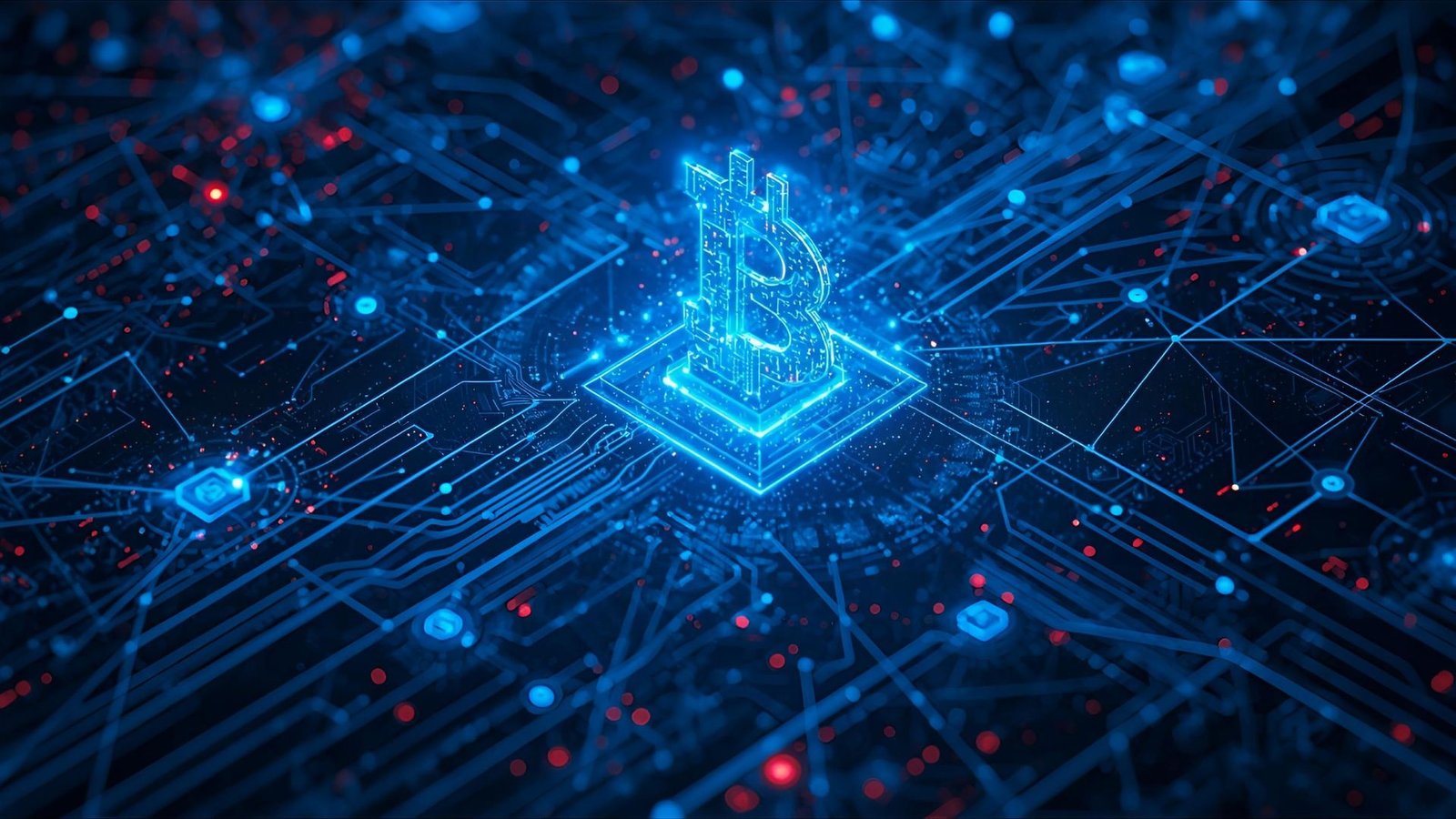The gaming industry stands at the precipice of a technological revolution, and The9 Limited is positioning itself at the forefront of this transformation. After years in the cryptocurrency mining sector, this Chinese gaming veteran is making a strategic return to its roots with an ambitious vision: constructing a Web3 gaming platform that could rival the dominance of Valve’s Steam. This bold move represents more than just a business pivot—it signals a fundamental shift in how gamers will interact with digital content, own in-game assets, and participate in gaming economies. As The9 Limited embarks on this journey to create what many are calling the “decentralized Steam,” the implications for the Web3 gaming platform landscape could reshape the entire gaming distribution model for the next decade.
The9 Limited: From Gaming Pioneer to Mining and Back Again
The9 Limited’s history reads like a roadmap of China’s digital entertainment evolution. Founded in 1999, the company gained international recognition as the licensed operator of World of Warcraft in China, managing one of the world’s largest gaming communities. At its peak, The9 demonstrated an innate understanding of massive multiplayer online games and the infrastructure required to support millions of concurrent players.
However, the gaming landscape shifted dramatically over the past decade. Facing increased competition and regulatory challenges in China’s gaming market, The9 Limited made a controversial pivot into cryptocurrency mining operations. This transition allowed the company to leverage its technological infrastructure while exploring blockchain technology’s potential applications.
Now, with cryptocurrency mining facing its own regulatory pressures and profitability challenges, The9 Limited is executing a strategic return to gaming—but with a revolutionary twist. The company isn’t simply rebuilding its traditional gaming business; it’s reimagining game distribution entirely through blockchain technology and decentralized systems.
Web3 Gaming Platform Vision
A Web3 gaming platform represents a paradigm shift from traditional centralized gaming ecosystems. Unlike conventional platforms where a single corporation controls all transactions, content distribution, and user data, Web3 platforms leverage blockchain technology to create decentralized, transparent, and user-empowered environments.
The9 Limited’s vision for their Web3 gaming platform includes several revolutionary features that set it apart from traditional platforms like Steam, Epic Games Store, or console marketplaces. At its core, the platform aims to give players actual ownership of their digital assets through non-fungible tokens (NFTs) and cryptocurrency integration.
This decentralized gaming approach addresses long-standing complaints from both players and developers. Gamers will genuinely own their purchased games and in-game items, with the ability to trade, sell, or transfer them without platform restrictions. Developers, meanwhile, could benefit from reduced commission fees, transparent revenue sharing, and direct community engagement without intermediary interference.
Why The9 Limited is Uniquely Positioned for Web3 Gaming Success
The9 Limited brings several competitive advantages to the emerging Web3 gaming platform market. Their extensive experience operating World of Warcraft in China provided invaluable insights into managing large-scale gaming communities, handling massive concurrent user loads, and navigating complex gaming economies where virtual items hold real-world value.
Furthermore, their recent years in cryptocurrency mining have given The9 engineers deep technical expertise in blockchain infrastructure, cryptocurrency transactions, and decentralized systems. This unique combination of gaming operational experience and blockchain technical knowledge positions them ahead of competitors who typically excel in only one domain.
The company’s existing relationships with game developers throughout Asia provide another strategic advantage. Many Chinese and Southeast Asian game studios are actively exploring blockchain integration, seeking distribution platforms that understand both Eastern and Western gaming markets. The9’s established reputation could facilitate partnerships that newer blockchain gaming platforms struggle to secure.
The Technical Architecture of The9’s Web3 Gaming Platform
Building a Web3 gaming platform requires sophisticated technical infrastructure that balances decentralization with performance. The9 Limited’s platform architecture reportedly integrates multiple blockchain networks to optimize for different functionalities—utilizing high-throughput chains for gameplay transactions while leveraging more established networks for asset ownership verification.
The platform’s innovative contract framework enables automated royalty distribution, ensuring that developers receive revenue shares instantly and transparently. This blockchain gaming ecosystem eliminates the traditional 30-90 day payment delays familiar with centralized platforms, significantly improving cash flow for independent developers.
Interoperability stands as another cornerstone of The9’s technical vision. Their Web3 gaming platform aims to support cross-chain asset transfers, allowing players to use NFTs and tokens across multiple games and platforms. This interoperability creates unprecedented opportunities for collaborative gaming economies where assets from one game might provide benefits or functionality in entirely different gaming worlds.
The Economic Model: Revolutionizing Game Distribution
Traditional gaming platforms like Steam typically charge developers 20-30% commission on all sales—a controversial model that has sparked developer backlash and even legal challenges. The9 Limited’s Web3 gaming platform proposes a dramatically different economic structure that could disrupt this established order.
By leveraging smart contracts and decentralized infrastructure, The9 can reduce operational overhead significantly. Early indications suggest their commission structure might range from 5-15%, substantially lower than legacy platforms. This competitive pricing could attract developers seeking better revenue retention, particularly independent studios operating on thin margins.
The cryptocurrency gaming economy extends beyond simple purchase transactions. The9’s platform will reportedly support play-to-earn mechanics, staking systems for passive income, and decentralized autonomous organization (DAO) governance, where token holders influence platform development decisions. These mechanisms create multiple revenue streams while fostering genuine community ownership of the platform’s future direction.
NFT Integration and True Digital Ownership

Non-fungible tokens represent the foundational technology enabling actual digital ownership on The9’s Web3 gaming platform. Unlike traditional gaming platforms, where users merely license access to content, NFT-based ownership provides verifiable, transferable property rights to games and in-game assets.
This NFT gaming marketplace functionality allows players to resell games they no longer play—something impossible on centralized platforms that prohibit resale or transfers. For collectors and investors, rare in-game items become genuine collectibles with established provenance and scarcity verification through blockchain records.
Developers gain new monetization opportunities through programmable royalties on secondary market transactions. When a rare weapon or character skin resells between players, smart contracts can automatically direct a percentage back to the original creators. This perpetual revenue model incentivizes developers to create genuinely valuable, enduring content rather than disposable consumables.
Challenges Facing The9’s Web3 Gaming Ambitions
Despite the promising vision, The9 Limited faces substantial challenges in establishing its Web3 gaming platform as a legitimate Steam competitor. Regulatory uncertainty remains the most significant obstacle, particularly given increasing governmental scrutiny of cryptocurrency and blockchain gaming worldwide.
Technical hurdles also loom large. Blockchain technology currently struggles with the transaction speeds and low latency requirements of modern gaming. While layer-2 solutions and sidechains offer improvements, achieving the seamless performance gamers expect from traditional platforms requires continued innovation.
User experience presents another critical challenge. The average gamer has little interest in managing cryptocurrency wallets, understanding blockchain transactions, or navigating decentralized systems. The9 must create an interface so intuitive that Web3 complexity becomes invisible to end users—a design challenge that has defeated many blockchain projects.
Market Competition in the Web3 Gaming Space
The9 Limited isn’t alone in pursuing the Web3 gaming platform opportunity. Several competitors are developing alternative visions for decentralized game distribution, each with distinct approaches and technical foundations.
Gala Games has established itself as an early leader, focusing on blockchain game development and publishing. Their platform combines game creation with distribution, giving them integrated control over content quality. Ultra is building a PC games marketplace with blockchain foundations while maintaining a more gradual transition approach that accommodates traditional gaming alongside Web3 features.
Enjin has concentrated on providing infrastructure and tools for developers to integrate blockchain features into existing games, positioning itself as an enabler rather than a direct competitor to traditional platforms. Meanwhile, established players like Epic Games have begun exploring NFT and blockchain integration, potentially bringing massive existing user bases into the Web3 ecosystem.
The9’s competitive advantage lies in their operational experience with massive gaming communities and deep blockchain technical expertise—a combination most competitors lack in equal measure.
The Developer Perspective: Incentives for Adoption
For The9’s Web3 gaming platform to succeed, attracting high-quality game developers is essential. The value proposition for developers encompasses several compelling incentives beyond simply lower commission rates.
Transparent analytics provided by blockchain technology give developers unprecedented insight into player behavior, secondary market activity, and community engagement. This data empowers better design decisions and more effective community management strategies.
Direct community funding mechanisms through token sales or NFT drops allow developers to secure development financing without traditional publishers. This independence preserves creative control while still providing the capital necessary for ambitious projects. Smart contract-based revenue sharing also enables innovative business models like community co-ownership, where players literally become stakeholders in games they support.
The decentralized gaming infrastructure reduces platform risk. Developers no longer face the threat of arbitrary de-platforming or policy changes that could destroy their business overnight—a genuine concern with centralized platforms that wield absolute control.
The Player Experience: What Gamers Can Expect
From a player’s perspective, The9’s Web3 gaming platform promises several tangible benefits that could justify switching from established platforms. Actual asset ownership means your games and items genuinely belong to you, tradable and transferable as you wish, without platform restrictions.
Cross-platform progression and asset interoperability could allow your investment in one game to provide value across multiple titles. Imagine a cosmetic item purchased in one game appearing as a special unlock in entirely different games—this kind of interconnected gaming universe becomes possible through blockchain standards.
The cryptocurrency gaming rewards model transforms gameplay into potential income. Skilled players in competitive games might earn tokens with real-world value, while casual gamers could accumulate rewards through regular play that offset game purchase costs. This play-to-earn ecosystem creates economic opportunities beyond entertainment.
Community governance through DAO mechanisms gives players actual influence over platform development priorities, feature implementations, and even content moderation policies. This democratic approach contrasts sharply with centralized platforms where users have no voice in corporate decisions.
Regulatory Landscape and Compliance Challenges
The regulatory environment for Web3 gaming platforms remains in flux, with different jurisdictions taking vastly different approaches. China, The9’s home market, has implemented some of the world’s strictest cryptocurrency and blockchain gaming regulations, potentially limiting domestic operations.
However, The9 can structure their platform to operate primarily in more permissive jurisdictions while maintaining compliance with international regulations. Singapore, Switzerland, and various Middle Eastern nations have established blockchain-friendly regulatory frameworks that could host the platform’s primary operations.
Securities regulations pose particular challenges. If platform tokens or gaming NFTs are deemed securities by regulators, The9 would face extensive compliance requirements, including registration, disclosure obligations, and trading restrictions. The company must carefully structure its tokenomics and offerings to avoid triggering securities classifications.
Anti-money laundering (AML) and know-your-customer (KYC) requirements present operational complexities. Balancing these compliance necessities with the anonymity and privacy expectations of cryptocurrency users requires sophisticated identity verification systems that don’t undermine the decentralized ethos.
The Technology Stack: Building Scalable Blockchain Infrastructure

The technical foundation of The9’s Web3 gaming platform requires careful selection of blockchain networks, scaling solutions, and infrastructure components. Ethereum remains the most established innovative contract platform with extensive developer tools and wallet integration, but its high gas fees and network congestion create user experience challenges.
Layer-2 scaling solutions like Polygon, Arbitrum, or Optimism offer Ethereum compatibility with dramatically improved transaction speeds and costs. The9 will likely leverage these technologies to provide affordable, fast transactions while maintaining a connection to Ethereum’s security and ecosystem.
Alternatively, purpose-built gaming blockchains like Immutable X or Ronin provide optimized infrastructure specifically designed for gaming applications. These chains sacrifice some decentralization for performance characteristics better suited to gaming demands.
Cross-chain bridges and multi-chain architecture allow The9 to leverage multiple blockchain networks simultaneously, using each for its strengths while maintaining interoperability. This hybrid approach provides flexibility as the blockchain gaming ecosystem evolves and new technologies emerge.
Monetization Strategies Beyond Traditional Game Sales
The9’s Web3 gaming platform enables diverse monetization strategies that extend far beyond traditional game purchases. Platform tokens create utility and governance mechanisms, potentially appreciating as the ecosystem grows, which benefits early adopters and active community members.
Transaction fees on the NFT gaming marketplace generate ongoing revenue from the secondary market trading activity. These fees remain substantially lower than traditional platform commissions while still creating sustainable income streams from the platform’s network effects.
Premium services like enhanced analytics for developers, promoted placement in the store, or advanced community tools can provide optional revenue while keeping basic platform access free or low-cost. This freemium model accommodates developers at all budget levels.
DeFi integration allows The9 to offer yield farming, liquidity provision, and staking services that generate additional revenue while providing value to users. These financial services transform the platform from simple game distribution into a comprehensive blockchain gaming ecosystem with multiple value propositions.
Community Building and Ecosystem Development
Success for The9’s Web3 gaming platform ultimately depends on cultivating a thriving community of players, developers, and stakeholders. Unlike centralized platforms where the company dictates all terms, Web3 platforms succeed through genuine community co-creation and shared ownership.
The9 must invest heavily in developer relations by providing comprehensive documentation, development tools, and technical support, making blockchain integration accessible even to studios without blockchain expertise. Developer grants and funding programs can attract quality content while demonstrating commitment to ecosystem growth.
Player education initiatives will help mainstream gamers understand Web3 concepts without overwhelming them with technical complexity. Tutorial content, simplified wallets, and gradual onboarding can make the transition from traditional to decentralized gaming feel natural rather than intimidating.
Strategic partnerships with established gaming studios, blockchain protocols, and payment processors expand the platform’s capabilities and credibility. These collaborations signal legitimacy to skeptical gamers while providing practical infrastructure for platform operations.
The Future of Game Distribution: Web3 vs. Traditional Platforms
The emergence of Web3 gaming platforms like The9’s project doesn’t necessarily spell doom for traditional platforms. Instead, a hybrid future seems most likely where both models coexist, each serving different needs and preferences within the gaming community.
Traditional platforms like Steam will likely incorporate selective blockchain features—NFT support, cryptocurrency payments, or blockchain-verified achievements—while maintaining their centralized operational structure. This evolutionary approach preserves their existing user bases while acknowledging blockchain technology’s potential benefits.
True Web3 platforms like The9’s vision will attract users who prioritize ownership, decentralization, and economic participation over simple convenience. These platforms may remain somewhat niche initially but could grow substantially as blockchain technology matures and regulatory clarity improves.
The competitive pressure from decentralized alternatives may force traditional platforms to reduce their commission rates, improve developer terms, and implement more transparent policies—benefiting the entire gaming ecosystem regardless of which platform model ultimately dominates.
Investment Implications and Market Opportunities
The9 Limited’s pivot to building a Web3 gaming platform represents a significant strategic bet with substantial implications for investors. The company’s stock performance will likely correlate with both blockchain market sentiment and progress toward platform milestones like developer partnerships, user acquisition, and technical achievements.
The broader market opportunity for decentralized gaming extends beyond just The9. Ancillary services like blockchain gaming infrastructure providers, NFT marketplace technologies, and gaming-focused cryptocurrency projects could all benefit from mainstream Web3 gaming adoption.
Investors should evaluate The9’s execution capabilities, partnership announcements, and competitive positioning relative to other blockchain gaming platforms. The company’s previous experience with World of Warcraft demonstrates operational competence, but successfully building a decentralized platform requires substantially different skills and approaches.
Risk factors include regulatory challenges, technical difficulties, competition from both Web3 and traditional platforms, and the broader volatility of cryptocurrency markets. The9’s success depends on numerous factors beyond their control, making this a high-risk, high-reward investment proposition.
Conclusion
The9 Limited’s return to gaming through their ambitious Web3 gaming platform project represents one of the most intriguing developments in both the gaming and blockchain industries. By combining their historic gaming expertise with blockchain technical capabilities gained through mining operations, The9 is uniquely positioned to build a genuine decentralized alternative to Steam’s centralized dominance.
The vision of actual digital ownership, lower developer fees, cross-platform asset interoperability, and community-driven governance addresses legitimate pain points in today’s gaming ecosystem. However, significant challenges remain in areas including regulatory compliance, technical scalability, user experience design, and competition from both established platforms and emerging Web3 alternatives.
Read More: Crypto Today: Bitcoin, Ethereum, XRP Recovery & Market Stabilization


